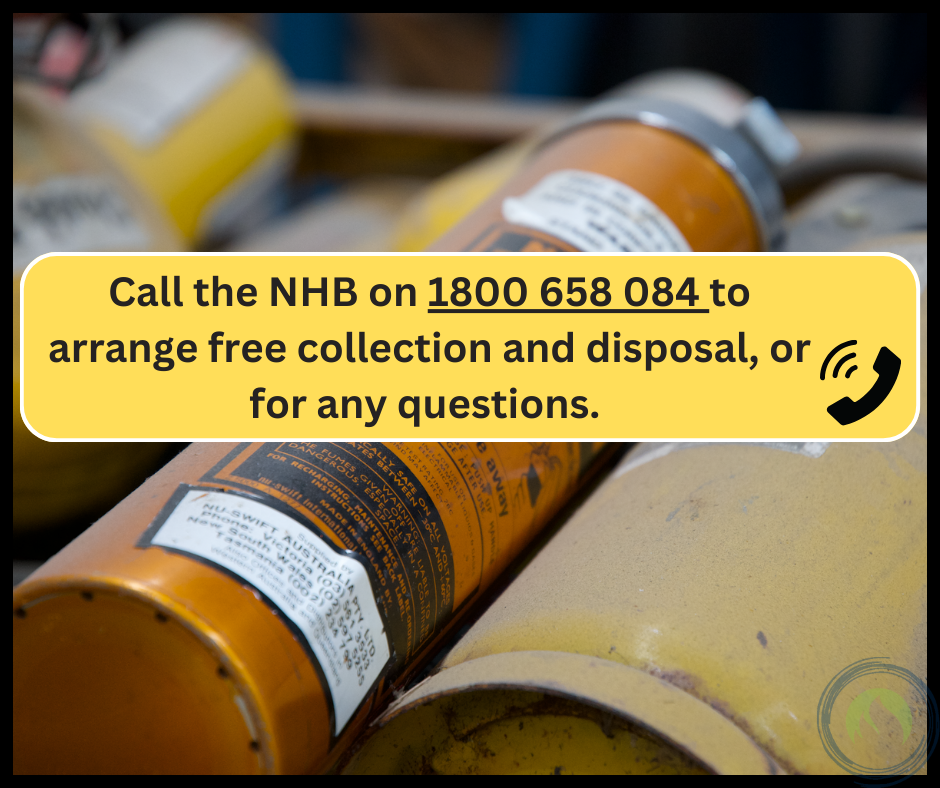Halon Collection Campaign
Halon is a firefighting agent that was introduced into Australia in the early 1970s. Halon quickly replaced many previously accepted firefighting products because of its efficiency and ease of use. This saw a significant utilisation of this product in the fire protection industry.
There are two types of halon commonly found in Australia:
- Halon 1211- known as BCF and used as a streaming agent, and;
- Halon 1301- known as BTM and used as a total flooding agent.
Halons are fully halogenated chemicals that have relatively long lifetimes in the atmosphere. Reactions involving bromine are estimated to be responsible for 25 per cent of the chemical destruction of ozone over Antarctica and 50 per cent over the Arctic. The ozone depleting potential of halons is ten times greater than chlorofluorocarbons (CFCs). In summary, halons are a very aggressive ozone-depleting chemical.
Data indicates that there are still some yellow BCF fire extinguishers located in Australia. In 2016, the National Halon Bank (NHB) reported to the Fire Protection Industry (ODS & SGGs) Board (the FPIB) through the Department of Climate Change, Energy, Environment, and Water (DCCEW) that they had received approximately six tonnes of halon 1211. This indicated at the time that there is still some BCF fire extinguishers needing to be collected.
The NHB was set up to maintain a stock of halon for non-defence uses until the transition to alternatives is complete, and for the stock to be managed under controlled conditions to prevent accidental release.
Contacts
For all National Halon Bank inquiries:
Phone: 1800 658 084
For policy related inquiries, please contact:
Department of Agriculture, Water and the Environment
Email: [email protected]
Phone: 1800 803 772 – community information unit
To encourage the safe disposal of halon, the FPIB implemented the Halon Collection Campaign. This involves helping to safely remove the community’s unused stocks of this ozone depleting substance. The Halon Collection Campaign aims to actively promote the recovery of halon by working with targeted industries and the general public.
Recognising the threat halons pose to the ozone layer and the risk to community members who are still using these extinguishers, the FPIB is calling on the fire protection industry and the general public to participate in the Halon Collection Campaign.
The halon collection points are:
- any fire station throughout Australia or;
- fire protection permit holders.
A full list of companies authorised to handle halon is available here.
Once BCF extinguishers have been dropped off they will be collected and transported to the NHB. The NHB is contracted by DCCEW.
At this facility, halon is stored, destroyed or recycled. The NHB operates a free call service to advise on the disposal of halon and also operates a service for the general public and small businesses to dispose of halon.
The criteria to qualify for free disposal can be found on the halon collection point deposit form, available here.

Please note, members of the Department of Defence as well as industry primes, contractors, and subcontractors who provide halon services to the Department of Defence, are not eligible to use this free service. Any halon recovery for the Department of Defence is to be delivered via the Department of Defence’s established internal processes.

